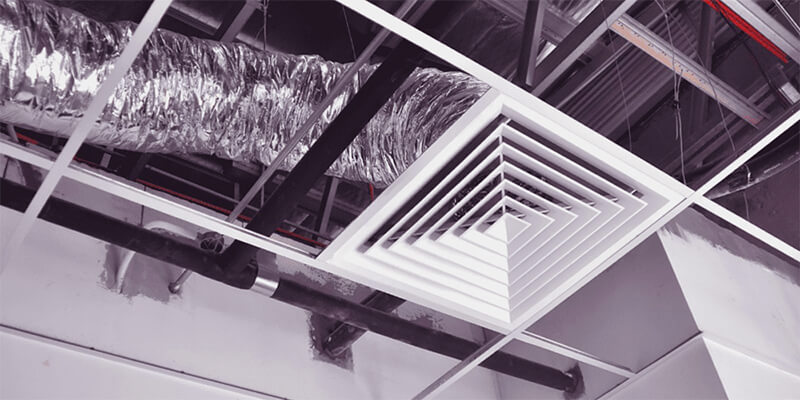Effective duct insulation is crucial for maintaining energy efficiency and indoor air quality in your home. Choosing the right type of insulation for your HVAC ducts can significantly impact your system’s performance and longevity. In this article, At air duct cleaning Katy, TX we will explore the various types of duct insulation, their benefits, and how to choose the best option for your needs.
Why Duct Insulation Matters
Duct insulation is essential for reducing energy loss, preventing condensation, and maintaining the desired temperature of the air flowing through your HVAC system. Proper insulation helps improve energy efficiency, reduce utility bills, and enhance indoor comfort.
Benefits of Duct Insulation
- Energy Efficiency: Reduces heat loss and gain, leading to lower energy consumption.
- Improved Comfort: Maintains consistent temperatures throughout the home.
- Condensation Control: Prevents moisture buildup and potential mold growth.
- Noise Reduction: Minimizes noise from air movement and system operation.
- Extended HVAC Lifespan: Reduces strain on the system, prolonging its life.
Types of Duct Insulation
Several types of duct insulation materials are available, each with unique properties and benefits. Here, we will discuss the most common types used in residential and commercial settings.
Fiberglass Insulation
Fiberglass Insulation is one of the most popular choices for duct insulation due to its affordability and effectiveness. It consists of fine glass fibers and is available in both blanket and board forms.
- Blanket Fiberglass: Suitable for wrapping around ducts.
- Board Fiberglass: Rigid panels used for insulating larger duct areas.
Benefits of Fiberglass Insulation
- Thermal Efficiency: Provides excellent thermal insulation.
- Sound Absorption: Reduces noise from the ductwork.
- Fire Resistance: Non-combustible material enhances safety.
Foam Board Insulation
Foam Board Insulation is made from rigid panels of polystyrene, polyurethane, or polyisocyanurate. It is lightweight, easy to install, and offers high thermal resistance.
Benefits of Foam Board Insulation
- High R-Value: Offers superior insulation performance.
- Moisture Resistance: Reduces the risk of condensation and mold growth.
- Durability: Long-lasting and resistant to damage.
Reflective Insulation
Reflective Insulation uses aluminum foil or metallic-coated films to reflect radiant heat. It is typically used in conjunction with other insulation materials to enhance thermal performance.
Benefits of Reflective Insulation
- Radiant Heat Barrier: Reflects heat away from ducts.
- Versatile Application: Can be used with other insulation types for added benefits.
- Lightweight and Easy to Install: Simple installation process reduces labor costs.
Spray Foam Insulation
Spray Foam Insulation is applied as a liquid that expands into a foam, providing excellent coverage and sealing gaps. It is ideal for hard-to-reach areas and irregular duct shapes.
Benefits of Spray Foam Insulation
- Air Sealing: Creates an airtight seal, reducing air leakage.
- High Insulating Value: Offers excellent thermal resistance.
- Moisture Barrier: Prevents condensation and mold growth.
Choosing the Right Duct Insulation
Selecting the right type of duct insulation depends on several factors, including your climate, budget, and specific HVAC system requirements. Here are some key considerations to help you make an informed decision.
Climate Considerations
- Cold Climates: High R-value insulation like fiberglass or foam board is recommended.
- Hot Climates: Reflective insulation combined with another type can enhance performance.
- Humid Climates: Moisture-resistant options like foam board or spray foam are ideal.
Budget and Installation
- Budget-Friendly: Fiberglass insulation is generally the most cost-effective option.
- Ease of Installation: Reflective and foam board insulations are easier to install.
- Professional Installation: Spray foam insulation typically requires professional application.
Specific HVAC Requirements
- Duct Type: Consider the shape and size of your ducts.
- Accessibility: Choose an insulation type that suits the duct location and accessibility.
- System Efficiency: Higher R-value insulation may be necessary for optimal performance.
Installing Duct Insulation
Proper installation is crucial for the effectiveness of duct insulation. Here are the general steps for insulating your HVAC ducts.
Step-by-Step Installation Guide
- Inspect the Ducts: Check for any existing damage or leaks.
- Clean the Ducts: Ensure the ducts are clean and free of debris.
- Measure and Cut Insulation: Cut the insulation to fit the ducts accurately.
- Apply Insulation: Wrap or place the insulation around the ducts securely.
- Seal Joints and Seams: Use appropriate sealing materials to close any gaps.
- Secure Insulation: Fasten the insulation with tape, wire, or clamps.
Safety Tips
- Wear protective gear, including gloves and a mask.
- Ensure proper ventilation during installation.
- Follow manufacturer instructions for each insulation type.
FAQs
What is the best type of duct insulation for cold climates?
In cold climates, fiberglass or foam board insulation is recommended due to their high R-values, which provide excellent thermal insulation.
Can I install duct insulation myself?
Yes, you can install some types of duct insulation yourself, such as fiberglass or reflective insulation. However, spray foam insulation typically requires professional installation for optimal results.
How often should duct insulation be replaced?
Duct insulation should be inspected annually and replaced if it shows signs of damage, wear, or moisture issues. Properly maintained insulation can last many years.
Is reflective insulation effective on its own?
Reflective insulation is most effective when used in conjunction with other insulation types, as it primarily reflects radiant heat rather than providing high thermal resistance.
Does duct insulation help with noise reduction?
Yes, duct insulation, especially fiberglass, can help reduce noise from the HVAC system by absorbing sound vibrations.
How do I know if my ducts need insulation?
If your HVAC system is inefficient, has inconsistent temperatures, or if you notice condensation or moisture issues, your ducts may benefit from additional insulation.
Conclusion
Choosing the right duct insulation is essential for maintaining energy efficiency, comfort, and indoor air quality in your home. By understanding the different types of duct insulation and their benefits, you can make an informed decision that suits your specific needs and climate. Regular maintenance and proper installation are key to maximizing the performance and lifespan of your HVAC system. For professional duct insulation and cleaning services in Katy, TX, contact United Air Duct Cleaning and Restoration Services.


